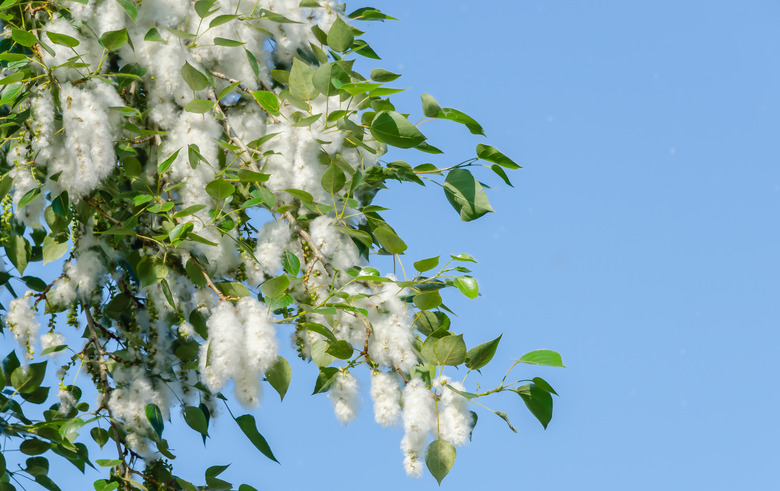What Are The Different Types Of Poplar Trees?
Poplar trees are all members of the genus Populus, a term that means "many of" in Latin. Several dozen species of poplar are grouped under the Populus umbrella. Although each species has its own characteristics, in general these trees grow fast and propagate easily but have powerful, suckering roots that can turn a row of poplars into a gardener's nightmare.
By learning about how to care for a poplar, you'll be able to more easily manage your grove of trees.
White Poplar and Carolina Poplar Tree
White Poplar and Carolina Poplar Tree
The white poplar is the ultimate survivor tree and very difficult to dislodge once established. An identifying feature on white poplars (Populus alba), a tough-as-nails garden tree that's a perennial in U.S. Department of Agriculture plant hardiness zones 3 through 9, is the five-lobed poplar leaf with a shiny, dark green top and a bright white bottom coming from a coating of hairs. The bark on these trees typically appears as a gray or white color and shows diamond-shaped blotches that appear darker.
Not for small yards, the while poplar grows to 80 feet tall and wide, with a trunk diameter of up to a yard. It's an extremely tolerant, easy-care tree, but its extensive, powerful roots can lift sidewalks, block drains and send up enough suckers to drive you crazy. The wood tends to be brittle and weak, making it susceptible to damage during storms. It's considered invasive in some states.
The Carolina poplar (Populus x canadensis) is a hybrid with many of the same qualities as the white poplar. It has the same tolerance and vigor, but it also comes with the invasive roots. Carolina poplars feature narrowly spreading crowns atop straight trunks, and they grow small reddish flowers in long, dangling clusters. These types of poplar trees are perennials in USDA zones 5 through 9.
Lombardy or Tower Poplar Tree
Lombardy or Tower Poplar Tree
If you want a tall tree, try the black poplar tree (Populus nigra 'Italica'), also called Lombardy poplar, but do so at your own risk. It's a classic, columnar ornamental, potentially rising to 100 feet tall and 30 feet wide in USDA zones 3 through 9, but its roots are problematic, sending up more suckers than you may want to deal with. It's also prone to disease.
The tower poplar (Populus x canescens 'Tower,' zones 3-9) is an alternative for planting in the same zones. It's more disease tolerant, but you'll likely have the same sucker problems. Tower poplars grow quickly and work well as screens or sound barriers.
Balsam Poplar Tree
Balsam Poplar Tree
The balsam poplar (Populus balsamifera) shoots up at an astonishing rate of some 36 inches a year to a mature height of 90 feet. These trees are perennials in USDA zones 5 through 9 and live over 150 years, so think before you plant. This species also plagues you with myriad suckers.
One method of balsam poplar identification is its leaves. It develops an attractive, oval crown with fragrant leaves that are long and narrow. You may notice orange resin on the bottoms of the leaves. The bark features a ridged or plated appearance at maturity.
Sucker-Free Poplar Tree
Sucker-Free Poplar Tree
You can avoid all the suckering headaches if you live in USDA zones 4 through 7 by planting the Japanese poplar (Populus maximowiczii). It's a tall, elegant poplar, with the same mature height and spread as the Lombardy, but it doesn't sprout or sucker. You still don't want to place its roots anywhere near your house, however.
You might also try the pyramidal Simon poplar (Populus simonii 'Fastigiata') that grows to 50 feet. It's suitable for USDA zones 2 through 6, and it isn't prone to producing suckers. This cultivar is typically grown as a screen or windbreak.
